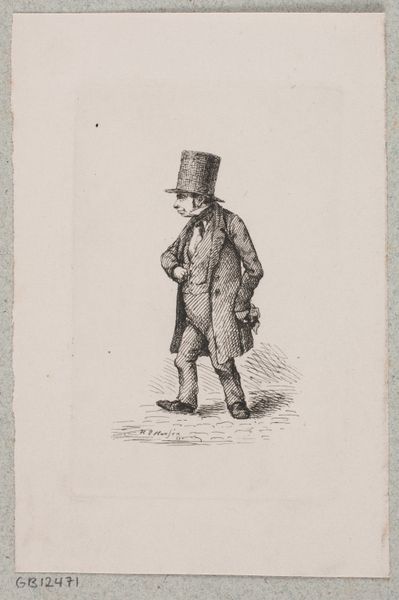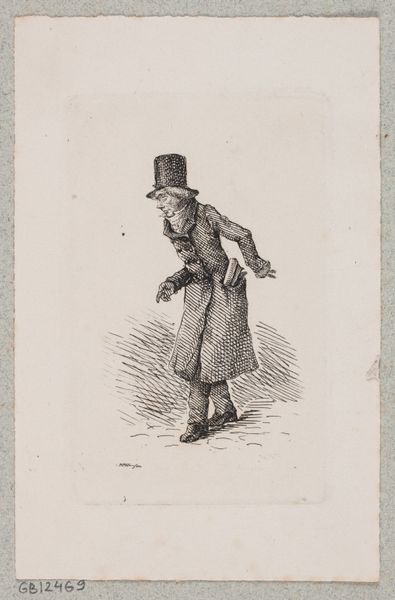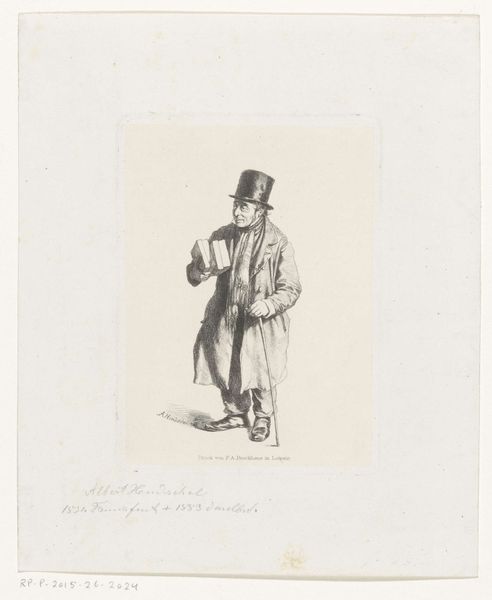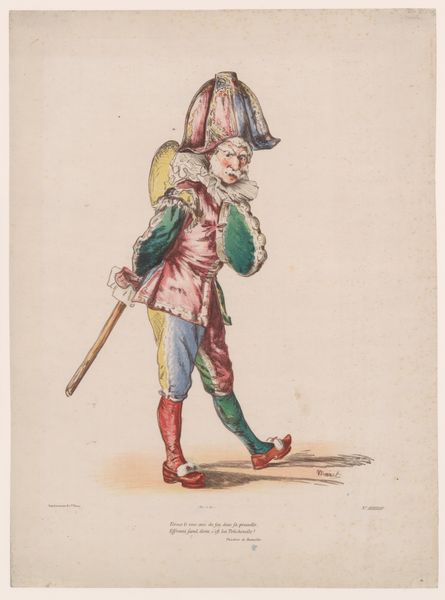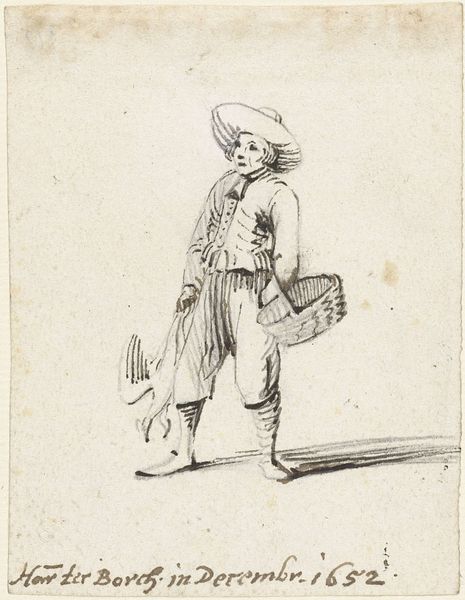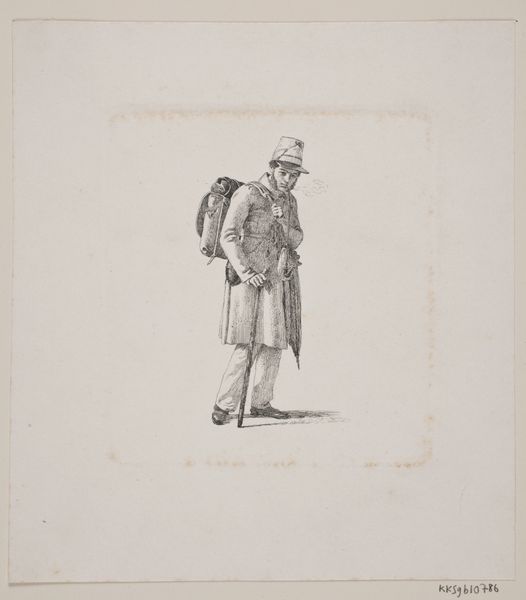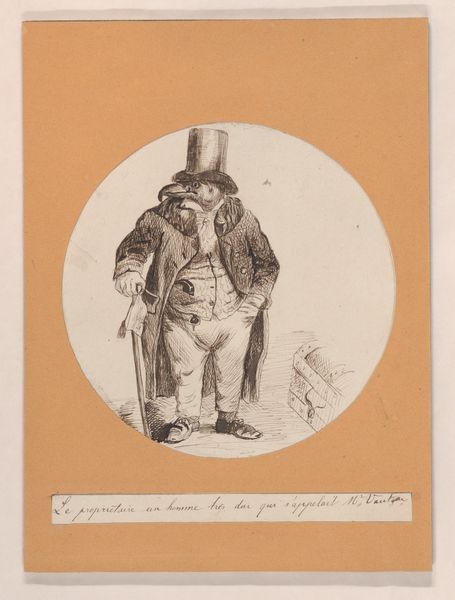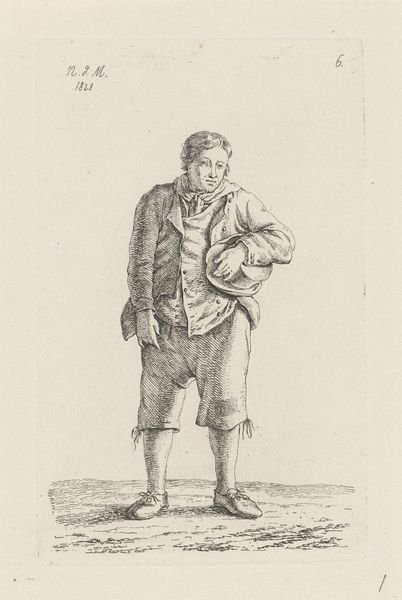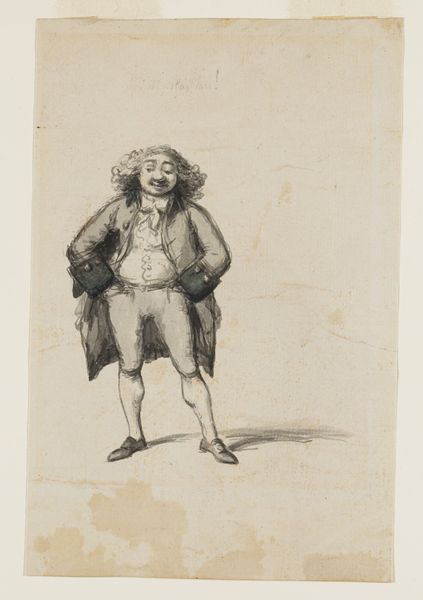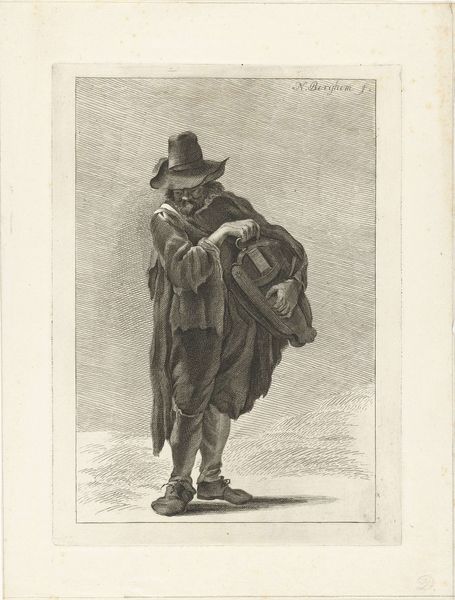
drawing, graphite
#
portrait
#
pencil drawn
#
drawing
#
pencil sketch
#
pencil drawing
#
romanticism
#
graphite
#
genre-painting
Dimensions: height 275 mm, width 245 mm
Copyright: Rijks Museum: Open Domain
Curator: There's something rather charming, if also a bit unsettling, about this pencil drawing. It's titled "Jongen met aap op zijn schouder," which translates to "Boy with Monkey on his Shoulder," created sometime between 1803 and 1842 by Anthonie Willem Hendrik Nolthenius de Man. Editor: Unsettling is right! I mean, at first glance, it appears to depict a relatively standard Romantic genre scene, perhaps of street life or a traveler, but something about the figure's grin and the presence of the monkey sends a shiver down my spine. What's happening here, culturally? Curator: I suspect this drawing captures a moment where the boundaries between human and animal were more fluid in the popular imagination. Monkeys, particularly in the 19th century, served as symbols of mimicry and perhaps a less developed version of ourselves. It represents, perhaps, an infantilizing and dehumanizing stereotype applied to marginalized people. Editor: Fascinating. That potent imagery persists today. How do you interpret the boy's clothing? Is he meant to be wealthy? Curator: His slightly disheveled appearance, including his rumpled coat and somewhat oversized top hat, suggests someone navigating between social classes. It reads less like affluent sophistication and more like someone making a show, or even a beggar trying to elicit some sympathy from passers-by, which was popular among genre painting from this time period. The monkey itself would be an exotic, attention-grabbing "accessory." Editor: And his grin feels... calculated. Considering what you have said regarding that period, it comes across almost predatory. Like the boy is using his circumstances to his advantage. But the drawing is also undeniably skillfully rendered with graphite, particularly the textures of the fur and fabrics. How might that fit in? Curator: The artist is almost playing with the tension. The fine draftsmanship elevates the subject matter, inviting us to consider deeper meaning within what seems like a simple genre painting. De Man is presenting something to his viewership, and this duality highlights his overall perspective in the artwork. Editor: It really forces us to question our own assumptions about innocence and exploitation. Thank you; this artwork offers so much to consider. Curator: Absolutely, a deceptively simple drawing that resonates with complexities and speaks to its time.
Comments
No comments
Be the first to comment and join the conversation on the ultimate creative platform.
